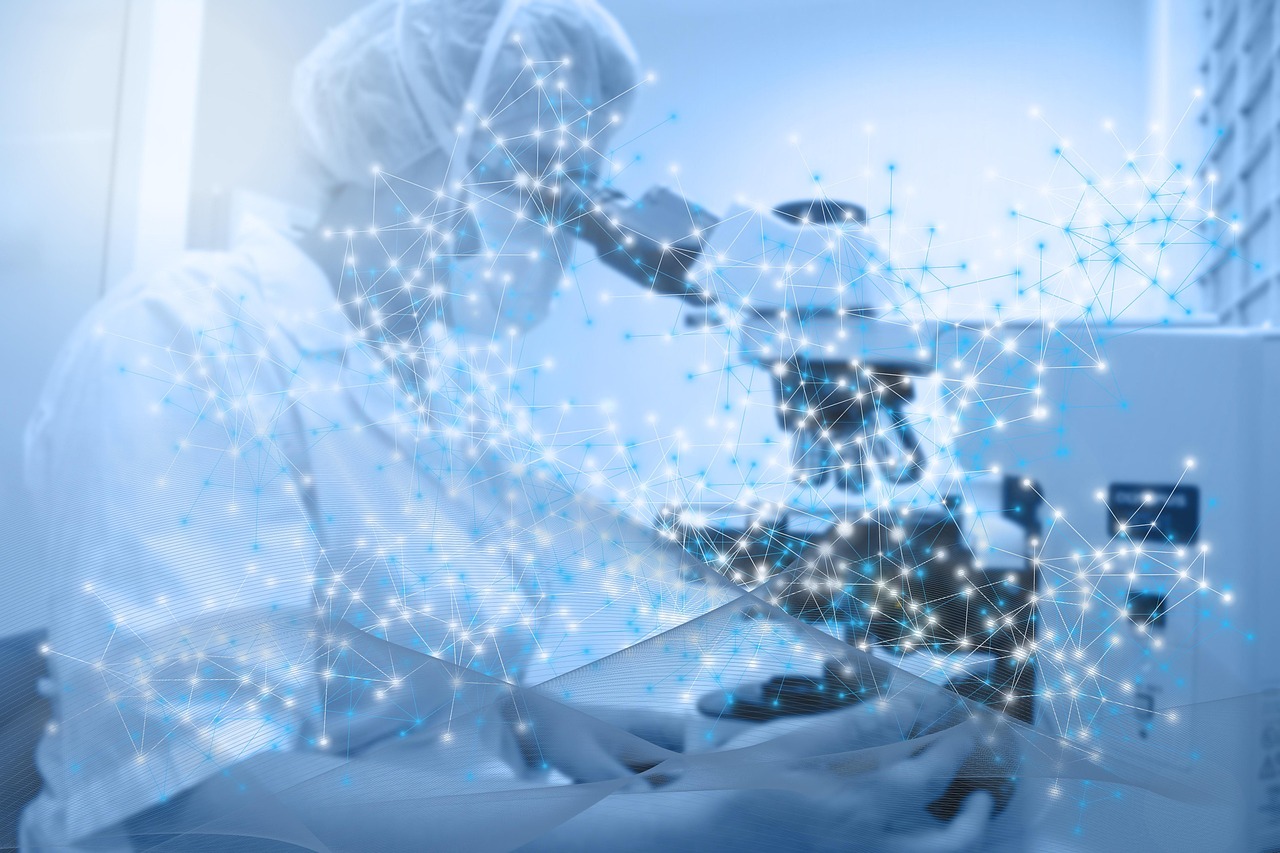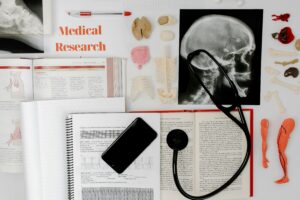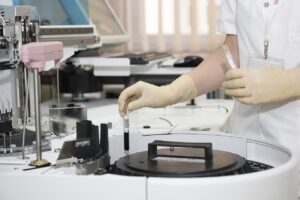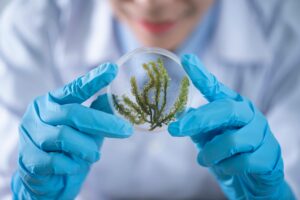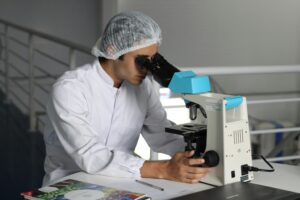Applications in Science and Medicine
Introduction
Science and medicine are fields that thrive on discovery, innovation, and the application of knowledge to improve human life. Over centuries, the convergence of these domains has led to transformative changes—from the discovery of antibiotics and vaccines to the use of advanced imaging technologies like MRI and CT scans. In recent decades, the rapid growth of technologies such as artificial intelligence (AI), machine learning, nanotechnology, genomics, and biotechnology has accelerated progress in ways previously unimaginable.
Applications in science and medicine today extend beyond treating illnesses—they encompass prevention, diagnosis, personalized therapies, scientific discovery, and even ethical debates surrounding the responsible use of new technologies. From enhancing our understanding of the human genome to applying physics in imaging, chemistry in drug design, and computer science in big data analytics, these applications are reshaping the future of healthcare and research.
This article explores the most significant applications in science and medicine, covering modern breakthroughs, real-world implementations, and their implications for the future.
1. Medical Imaging and Diagnostic Technologies
One of the most profound applications of science in medicine is medical imaging, which enables doctors to visualize internal structures of the body without invasive surgery.
Key Imaging Techniques:
-
X-rays: First discovered in 1895, X-rays revolutionized diagnostics by making bone fractures and internal abnormalities visible.
-
Magnetic Resonance Imaging (MRI): Uses powerful magnets and radio waves to create detailed soft tissue images, invaluable for brain, spinal cord, and joint diagnostics.
-
Computed Tomography (CT) scans: Provide cross-sectional images of the body, crucial for cancer detection, trauma assessment, and cardiovascular conditions.
-
Ultrasound: Employs sound waves for imaging organs, fetal monitoring during pregnancy, and guiding minimally invasive surgeries.
-
Positron Emission Tomography (PET): Combines imaging with radioactive tracers to study metabolic processes, particularly in oncology and neurology.
AI in Imaging:
Artificial intelligence has further advanced imaging. AI-powered algorithms detect early signs of tumors, strokes, or heart disease that might escape the human eye. For instance, AI-based mammography has improved early breast cancer detection rates, reducing false negatives.
2. Genomics and Personalized Medicine
The completion of the Human Genome Project in 2003 marked a turning point in medicine. By mapping all human genes, scientists unlocked a new era of genomics and personalized medicine.
Applications:
-
Disease Prediction: Genetic testing reveals predispositions to diseases like Alzheimer’s, diabetes, and breast cancer.
-
Pharmacogenomics: Medication responses vary among individuals. By analyzing genetic data, doctors can prescribe drugs tailored to a patient’s genetic profile, minimizing side effects.
-
CRISPR Gene Editing: This Nobel Prize-winning technology allows precise editing of DNA, offering potential cures for genetic disorders such as sickle cell anemia and cystic fibrosis.
-
Oncology Applications: Personalized cancer treatments, such as CAR-T cell therapy, use a patient’s own modified immune cells to fight tumors.
The integration of genomics with clinical practice represents one of the most promising shifts in healthcare—from reactive to proactive medicine.
3. Biotechnology and Drug Development
Biotechnology combines biology with technology to develop drugs, vaccines, and therapeutic solutions. It has been pivotal in:
-
Vaccine Development: mRNA vaccine platforms (e.g., COVID-19 vaccines) were developed rapidly thanks to decades of biotechnology research.
-
Monoclonal Antibodies: Engineered proteins that mimic natural antibodies, widely used in treating cancers and autoimmune diseases.
-
Biopharmaceuticals: Insulin, growth hormones, and clotting factors produced using recombinant DNA technology.
-
Tissue Engineering: Growing artificial organs and tissues in laboratories to replace damaged ones.
Impact on Medicine:
Drug discovery, which once took over a decade, is now accelerated by computational biology, AI drug screening, and lab-on-chip technologies. This shortens development cycles while reducing costs and risks.
4. Nanotechnology in Medicine
Nanomedicine applies nanotechnology (the manipulation of matter on the atomic scale) to healthcare.
Applications:
-
Targeted Drug Delivery: Nanoparticles carry drugs directly to diseased cells, reducing systemic side effects (e.g., in chemotherapy).
-
Imaging Enhancements: Nanoparticles improve the resolution of MRI and other imaging methods.
-
Biosensors: Nano-scale sensors detect biomarkers for diseases at very early stages.
-
Wound Healing: Nano-coatings in dressings promote faster healing and prevent infections.
The ability to work at the cellular and molecular level makes nanotechnology one of the most revolutionary tools in modern medicine.
5. Artificial Intelligence and Machine Learning in Medicine
AI is one of the most disruptive technologies in healthcare today. It is transforming nearly every aspect of medicine:
Key Uses:
-
Clinical Decision Support: AI systems analyze patient records, lab reports, and imaging scans to suggest diagnoses.
-
Predictive Analytics: Algorithms predict disease outbreaks, patient readmission risks, and treatment outcomes.
-
Robotic Surgery: AI-driven robots assist surgeons with precision, reducing complications and recovery time.
-
Drug Discovery: Machine learning models analyze millions of chemical compounds to identify potential drugs faster.
-
Virtual Health Assistants: Chatbots and AI-based apps provide medical information, mental health counseling, and appointment scheduling.
AI in medicine bridges the gap between massive data availability and actionable insights, offering faster, more accurate, and personalized healthcare.
6. Physics and Chemistry in Medicine
Beyond biology, the principles of physics and chemistry have shaped modern medical applications.
Applications:
-
Radiation Therapy: Uses high-energy particles to destroy cancer cells.
-
Nuclear Medicine: Radioisotopes diagnose and treat diseases.
-
Laser Surgery: Corrective eye surgeries and cosmetic procedures rely on precision lasers.
-
Chemical Drug Design: Structure-based drug design employs chemistry to synthesize molecules targeting specific proteins.
Without contributions from physics and chemistry, advanced medical tools like pacemakers, dialysis machines, and heart stents would not exist.
7. Applications in Neuroscience and Mental Health
Neuroscience combines psychology, biology, and technology to study the brain and nervous system. Recent applications include:
-
Brain Imaging: fMRI and EEG map brain activity, aiding in understanding neurological disorders.
-
Neuroprosthetics: Brain-machine interfaces allow paralyzed individuals to control robotic limbs.
-
Deep Brain Stimulation: Implanted electrodes treat conditions like Parkinson’s disease and severe depression.
-
AI in Psychiatry: Machine learning models analyze speech patterns and social media activity to detect early signs of mental illness.
Such applications enhance both diagnosis and therapy in one of medicine’s most complex areas.
8. Telemedicine and Digital Health
Digital technologies have revolutionized healthcare accessibility. Telemedicine allows patients to consult doctors remotely, breaking geographical barriers.
Applications:
-
Remote Consultations: Especially useful in rural areas lacking healthcare facilities.
-
Wearable Devices: Smartwatches monitor heart rate, oxygen levels, and detect arrhythmias.
-
Mobile Health Apps: Track diabetes, hypertension, and fitness, empowering individuals to manage their health.
-
Electronic Health Records (EHRs): Digitized records improve care coordination between hospitals and clinics.
The COVID-19 pandemic accelerated telemedicine adoption, proving its role as a permanent pillar of modern healthcare.
9. Applications in Scientific Research
Beyond medicine, scientific research applications drive discoveries that later translate into clinical benefits.
-
High-Performance Computing (HPC): Simulations of protein folding, climate systems, and drug interactions.
-
CRISPR in Basic Science: Used to understand gene functions by “knocking out” specific genes in model organisms.
-
Particle Accelerators: Not just for physics—synchrotrons help study molecular structures of proteins.
-
Bioinformatics: Analyzing massive biological datasets to uncover patterns in evolution, disease, and drug targets.
These applications show how pure science and applied medicine are deeply interconnected.
10. Ethical and Societal Implications
Scientific and medical applications also raise important ethical considerations:
-
Genetic Privacy: Who owns and controls genomic data?
-
AI Bias in Healthcare: Algorithms trained on biased data may worsen health disparities.
-
Cloning and Stem Cell Research: Ethical debates continue around reproductive cloning and embryo research.
-
Access to Technology: Advanced treatments may widen healthcare inequality between developed and developing nations.
Responsible governance and ethical frameworks are essential to ensure science and medicine benefit humanity universally.
11. Future Directions
The next few decades promise groundbreaking advancements:
-
Quantum Computing in Drug Discovery: Faster simulations of molecular interactions.
-
Synthetic Biology: Designing artificial life forms to produce medicines or biofuels.
-
Regenerative Medicine: Stem cells and 3D bioprinting creating functional organs for transplantation.
-
Precision Public Health: Using big data to design policies tailored to specific populations.
-
AI + Robotics Integration: Fully autonomous surgical systems and hospital management AI.
The fusion of multidisciplinary sciences will continue driving medicine into a more predictive, preventive, personalized, and participatory (P4 medicine) era.
Conclusion
The applications of science in medicine have fundamentally reshaped how we understand, diagnose, treat, and prevent diseases. From imaging technologies and genomics to AI, nanotechnology, and telemedicine, these innovations illustrate the synergy of multiple scientific disciplines in improving human health.
The journey is ongoing—new discoveries will push the boundaries of what’s possible. However, balancing innovation with ethics, accessibility, and equity will be key to ensuring that the benefits of science in medicine are shared globally. Ultimately, the marriage of science and medicine is not just about technology—it’s about enhancing the quality and longevity of human life.
Federated Learning: A New Era of Decentralized Machine Learning

